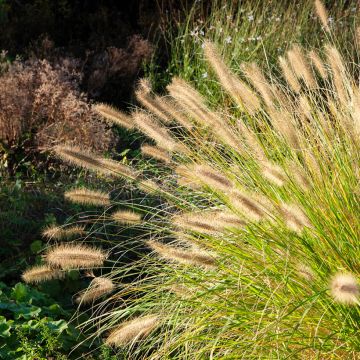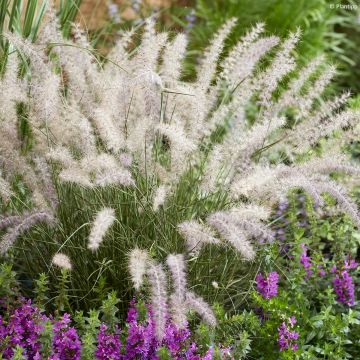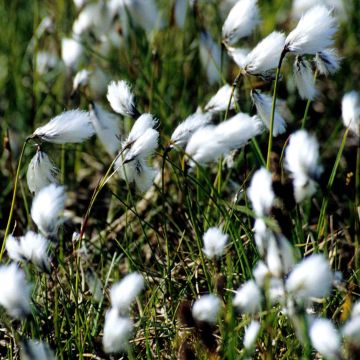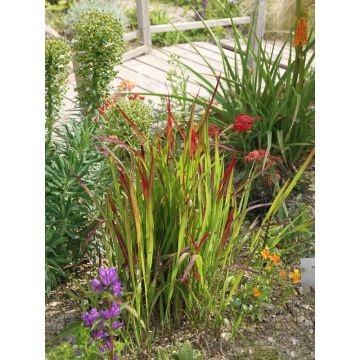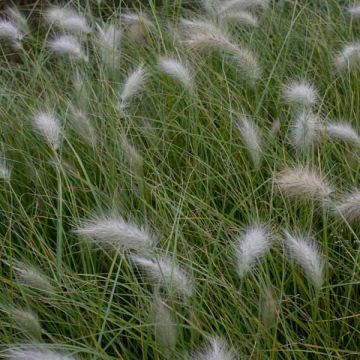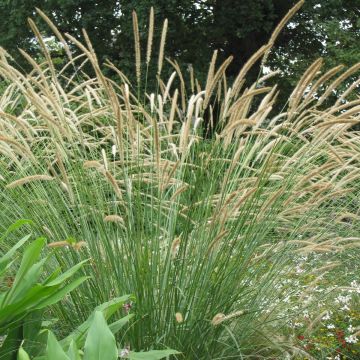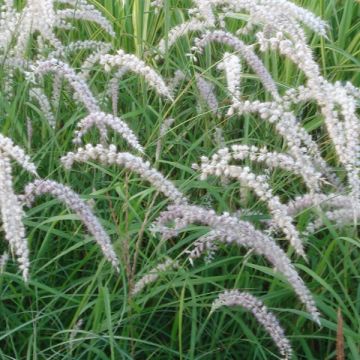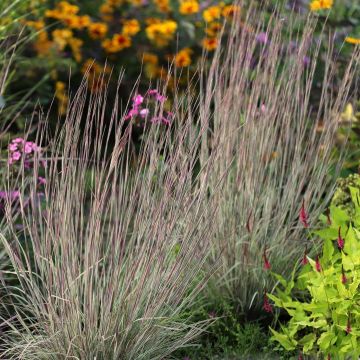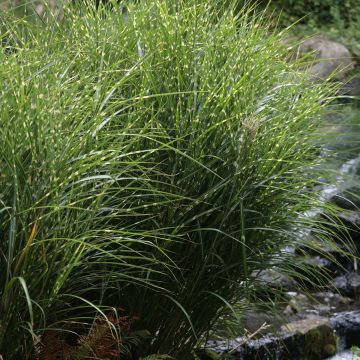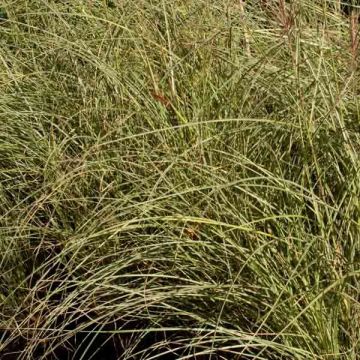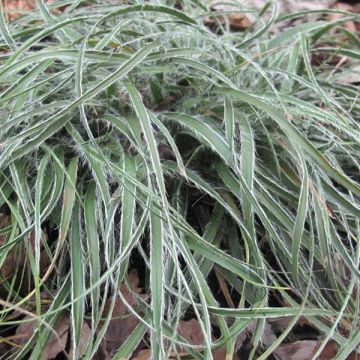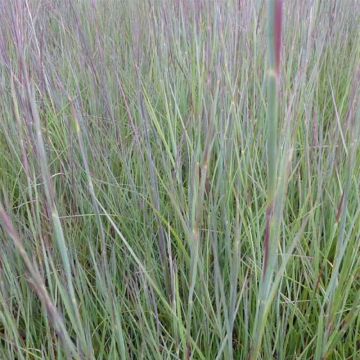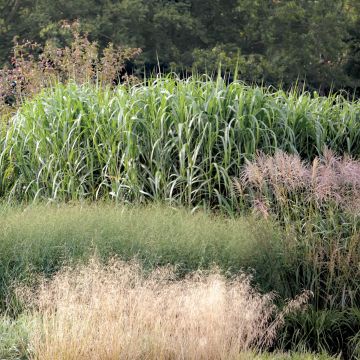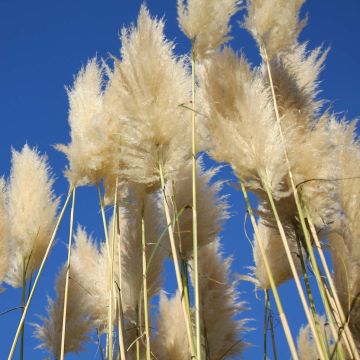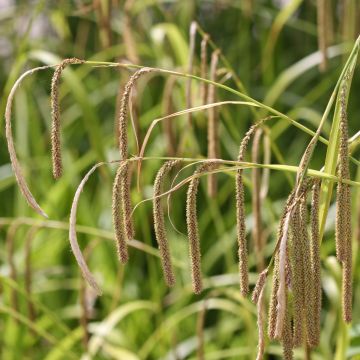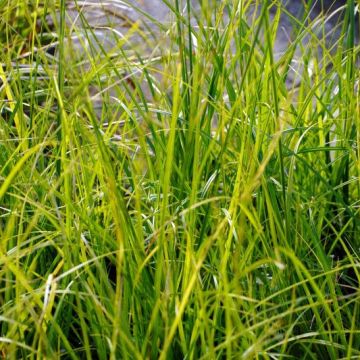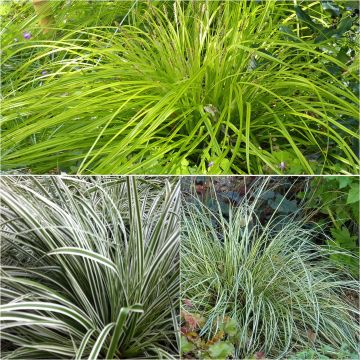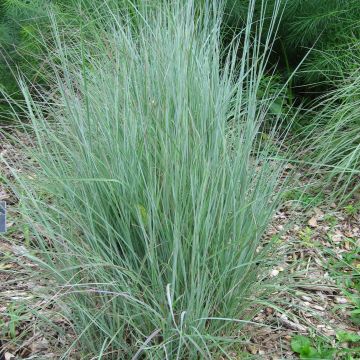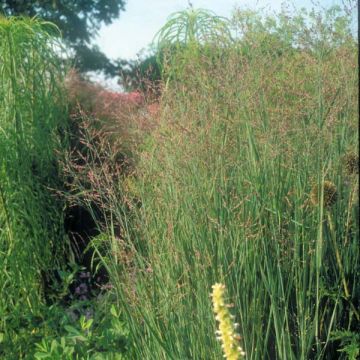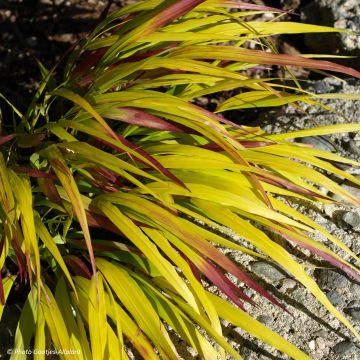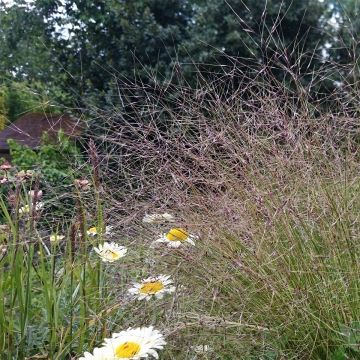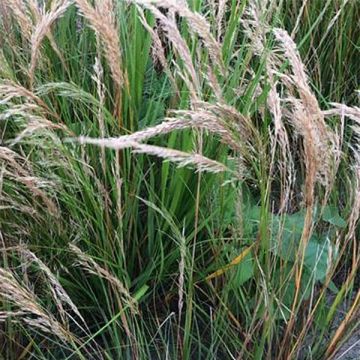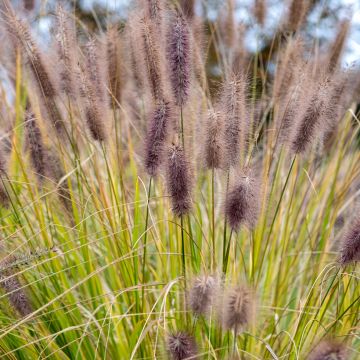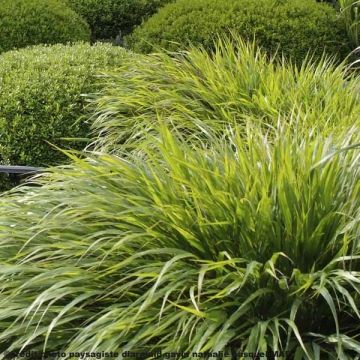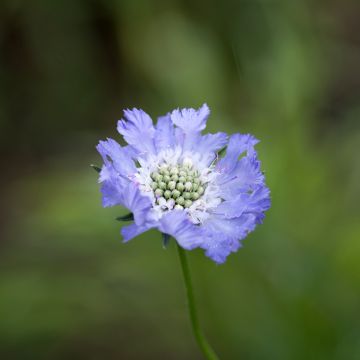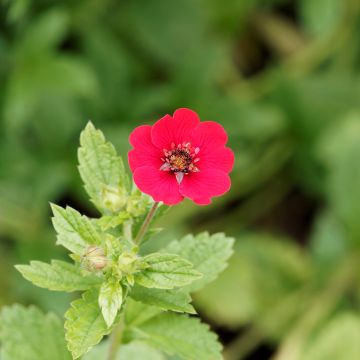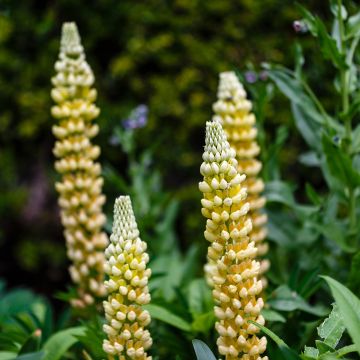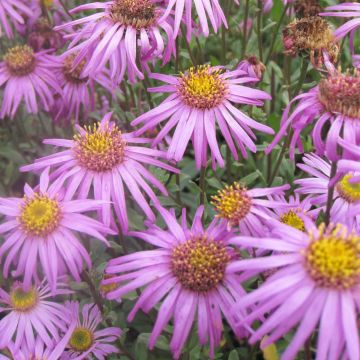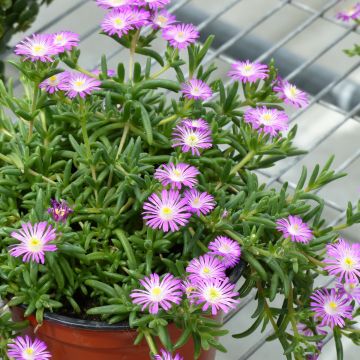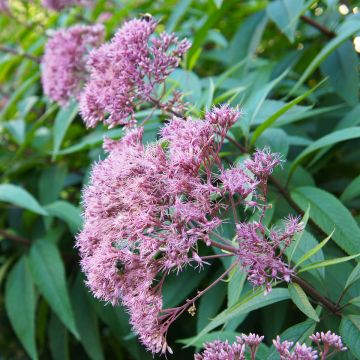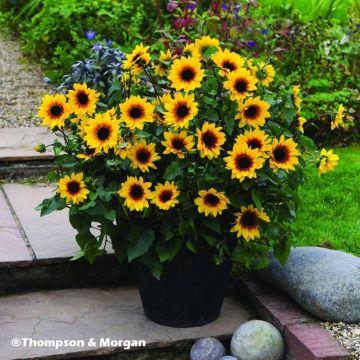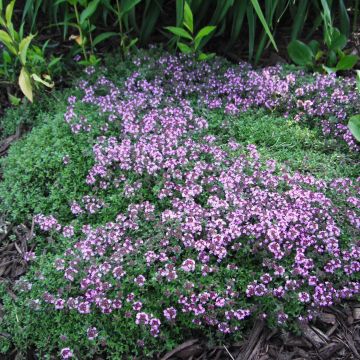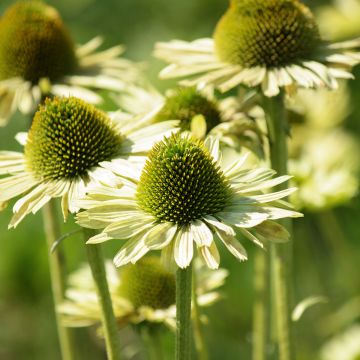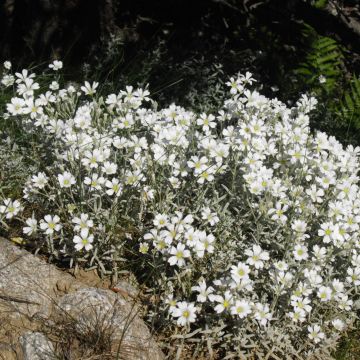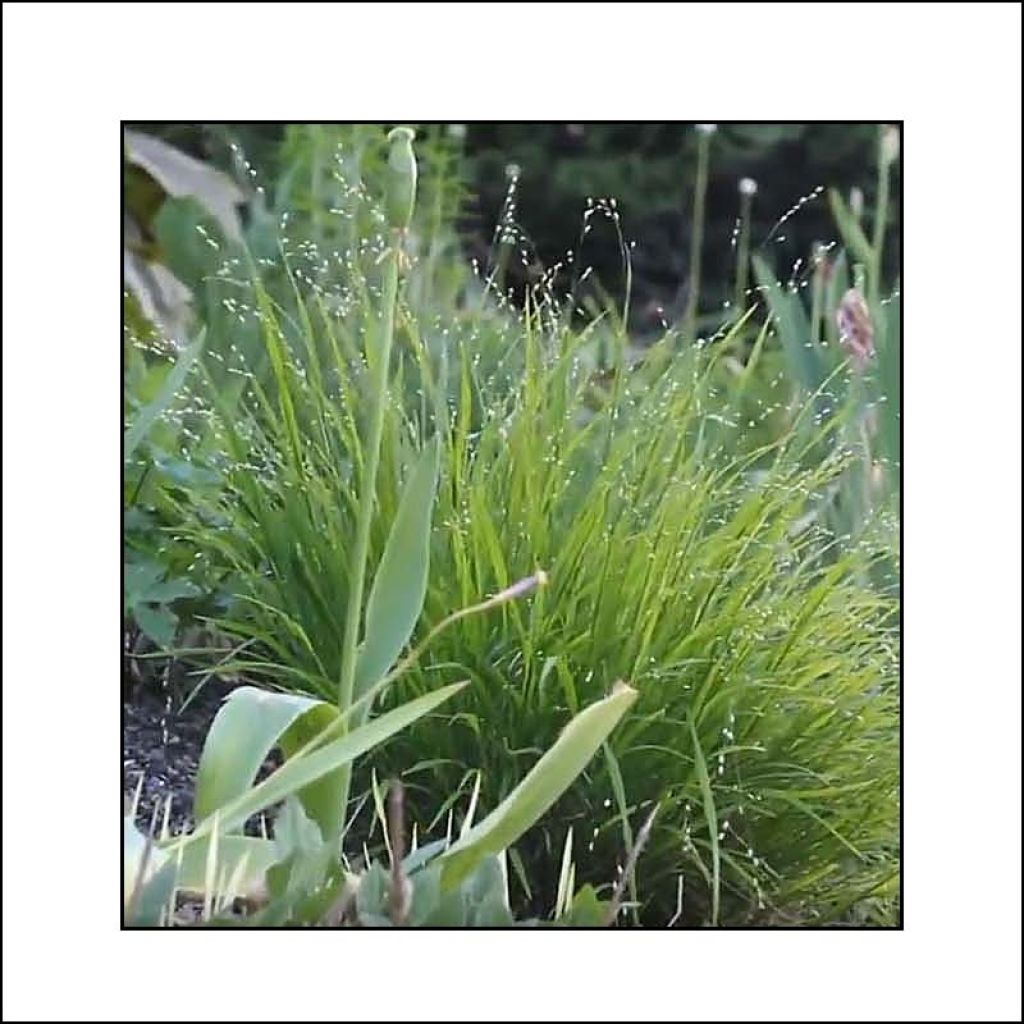

Melica uniflora f. albida
Melica uniflora f. albida
Melica uniflora var. albida
Wood Melic
Why not try an alternative variety in stock?
View all →This plant carries a 12 months recovery warranty
More information
We guarantee the quality of our plants for a full growing cycle, and will replace at our expense any plant that fails to recover under normal climatic and planting conditions.
From €5.90 for pickup delivery and €6.90 for home delivery
Express home delivery from €8.90.
Does this plant fit my garden?
Set up your Plantfit profile →
Description
Melica uniflora f. albida, also known as the single-flowered melic grass, is a delightful white-flowered form of a small perennial grass widely found in our clear woodlands. Although not commonly planted in gardens, it is exquisitely delicate and valuable for landscaping shady areas, including near trees or bushes that dry out the soil in summer. It forms a flexible, slightly trailing clump of fresh green, wide leaves from which emerge arched stems in spring, bearing slender panicles with very white spikelets, evoking the delicacy of confetti.
Melica uniflora is a graceful herbaceous perennial plant with slender rhizomes belonging to the large Poaceae family. This herb, native to Europe, North Africa, and western Asia, is perfectly adapted to most climates and is completely hardy. It is often found in woodlands or growing between shaded rocks.
This 'albida' form distinguishes itself from the common species by the very white colouration of its spikelets and seeds. From its stump, the plant forms a clump of flexible, wide, flat, rough, trailing, light green leaves, reaching a maximum height of 60cm (24in) when in flower, 40cm (16in) for the foliage. Flowering occurs from May to July depending on the climate. The fine spikes of this melic grass are quite loose, erect or inclined. They bear scattered spikelets with a single fertile flower, carried by thin pedicels. The flowers are white. This "white confetti" flowering, carried by graceful and moving stems just above the foliage, is incredibly charming. After wind pollination, the flowers give way to seeds lightly tinted with brown-purple. This variety easily self-sows in light soils.
Hardy and undemanding regarding soil quality, the single-flowered melic grass grows in any good garden soil, preferably in partial shade. It prefers moist but not excessively wet soil. It will also tolerate dry soil in summer. It works wonders on the edge of a grove, along a path, or planted at the base of a shrub hedge. It can be planted with Omphalodes verna, heucheras, lungworts, silver candlestick, alpine barrenwort, Brunnera macrophylla 'Jack Frost', or tall foxgloves. It also has its place in a large perennial border where it will lighten the flowering, or in a not too dry flower meadow mixed with easy annuals such as cornflowers, cosmos, centaureas, candytuft, and daisies.
Report an error about the product description
Melica uniflora f. albida in pictures
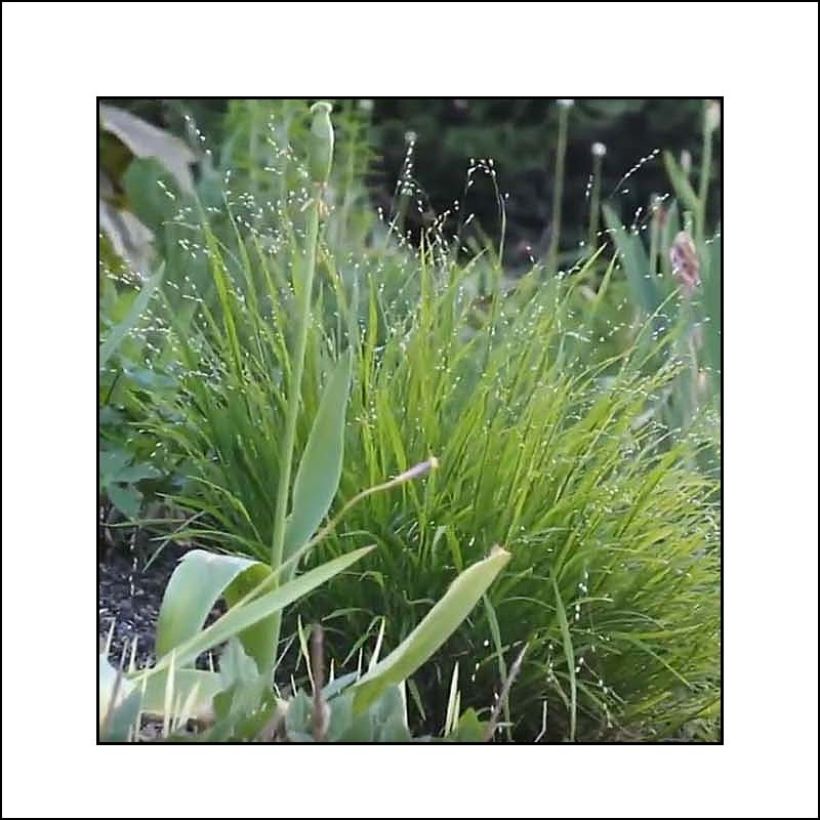

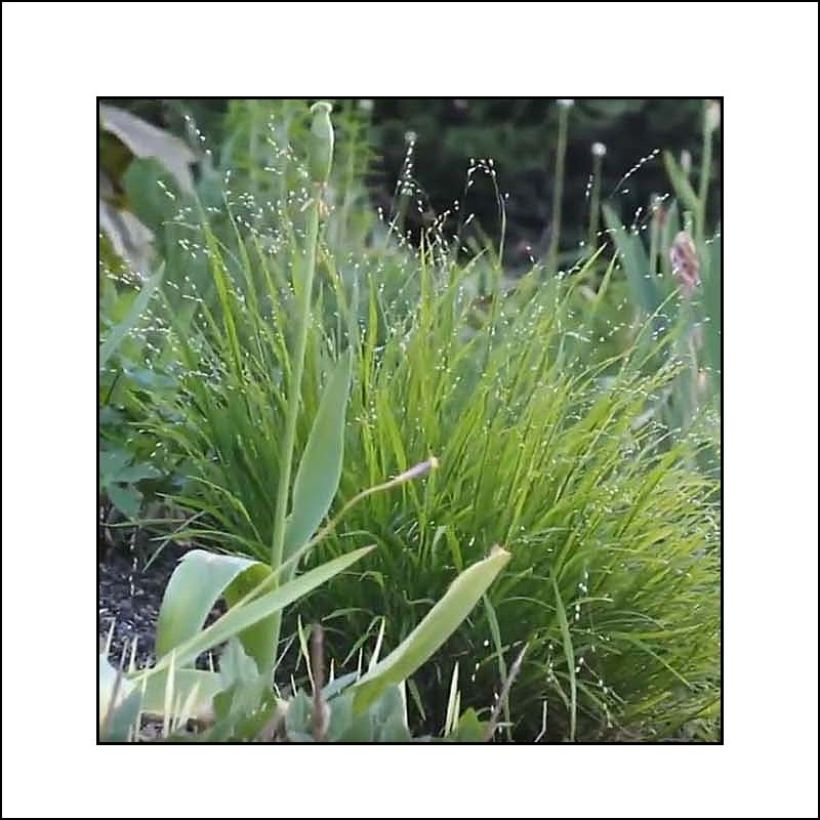

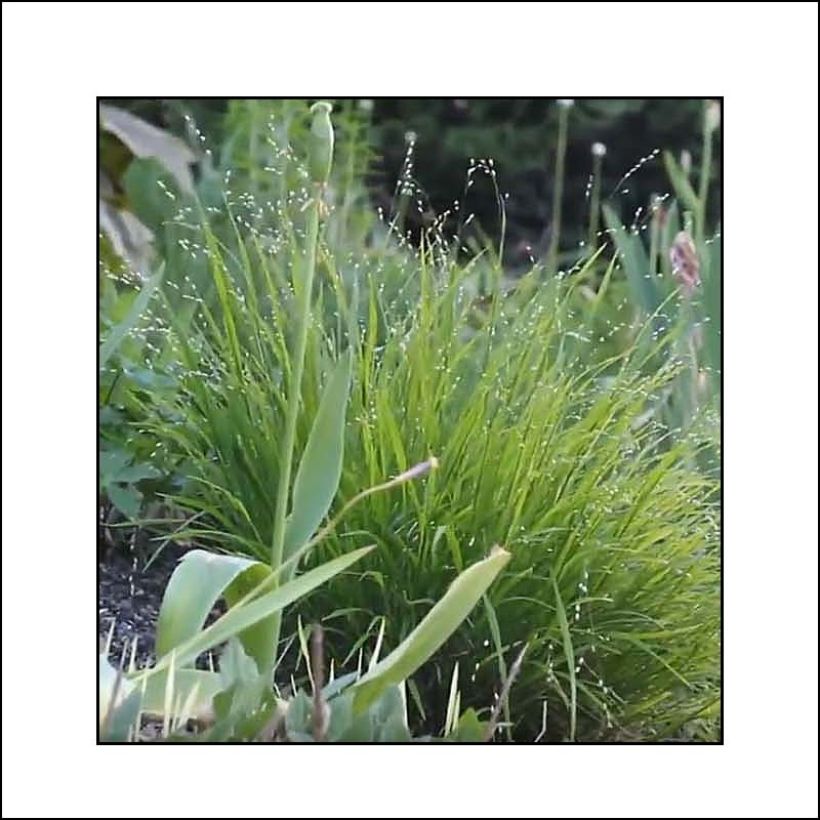

Flowering
Foliage
Plant habit
Botanical data
Melica
uniflora
var. albida
Poaceae
Wood Melic
Western Europe
Other Ornemental grasses A to Z
Planting and care
Undemanding regarding soil quality, Melica uniflora grows in any good garden soil, preferably in partial shade or light sunlight (light shade is well tolerated). In very hot regions, the foliage may go dormant as early as August if the plant is exposed to sunlight, without harming the plant. The soil should be fertile and light. The presence of limestone and clay in the soil is not a problem. The vegetation dries out in winter. Clean the clump in early spring, as soon as new leaves appear.
Planting period
Intended location
Care
This item has not been reviewed yet - be the first to leave a review about it.
Summer flowering perennials
Haven't found what you were looking for?
Hardiness is the lowest winter temperature a plant can endure without suffering serious damage or even dying. However, hardiness is affected by location (a sheltered area, such as a patio), protection (winter cover) and soil type (hardiness is improved by well-drained soil).

Photo Sharing Terms & Conditions
In order to encourage gardeners to interact and share their experiences, Promesse de fleurs offers various media enabling content to be uploaded onto its Site - in particular via the ‘Photo sharing’ module.
The User agrees to refrain from:
- Posting any content that is illegal, prejudicial, insulting, racist, inciteful to hatred, revisionist, contrary to public decency, that infringes on privacy or on the privacy rights of third parties, in particular the publicity rights of persons and goods, intellectual property rights, or the right to privacy.
- Submitting content on behalf of a third party;
- Impersonate the identity of a third party and/or publish any personal information about a third party;
In general, the User undertakes to refrain from any unethical behaviour.
All Content (in particular text, comments, files, images, photos, videos, creative works, etc.), which may be subject to property or intellectual property rights, image or other private rights, shall remain the property of the User, subject to the limited rights granted by the terms of the licence granted by Promesse de fleurs as stated below. Users are at liberty to publish or not to publish such Content on the Site, notably via the ‘Photo Sharing’ facility, and accept that this Content shall be made public and freely accessible, notably on the Internet.
Users further acknowledge, undertake to have ,and guarantee that they hold all necessary rights and permissions to publish such material on the Site, in particular with regard to the legislation in force pertaining to any privacy, property, intellectual property, image, or contractual rights, or rights of any other nature. By publishing such Content on the Site, Users acknowledge accepting full liability as publishers of the Content within the meaning of the law, and grant Promesse de fleurs, free of charge, an inclusive, worldwide licence for the said Content for the entire duration of its publication, including all reproduction, representation, up/downloading, displaying, performing, transmission, and storage rights.
Users also grant permission for their name to be linked to the Content and accept that this link may not always be made available.
By engaging in posting material, Users consent to their Content becoming automatically accessible on the Internet, in particular on other sites and/or blogs and/or web pages of the Promesse de fleurs site, including in particular social pages and the Promesse de fleurs catalogue.
Users may secure the removal of entrusted content free of charge by issuing a simple request via our contact form.
The flowering period indicated on our website applies to countries and regions located in USDA zone 8 (France, the United Kingdom, Ireland, the Netherlands, etc.)
It will vary according to where you live:
- In zones 9 to 10 (Italy, Spain, Greece, etc.), flowering will occur about 2 to 4 weeks earlier.
- In zones 6 to 7 (Germany, Poland, Slovenia, and lower mountainous regions), flowering will be delayed by 2 to 3 weeks.
- In zone 5 (Central Europe, Scandinavia), blooming will be delayed by 3 to 5 weeks.
In temperate climates, pruning of spring-flowering shrubs (forsythia, spireas, etc.) should be done just after flowering.
Pruning of summer-flowering shrubs (Indian Lilac, Perovskia, etc.) can be done in winter or spring.
In cold regions as well as with frost-sensitive plants, avoid pruning too early when severe frosts may still occur.
The planting period indicated on our website applies to countries and regions located in USDA zone 8 (France, United Kingdom, Ireland, Netherlands).
It will vary according to where you live:
- In Mediterranean zones (Marseille, Madrid, Milan, etc.), autumn and winter are the best planting periods.
- In continental zones (Strasbourg, Munich, Vienna, etc.), delay planting by 2 to 3 weeks in spring and bring it forward by 2 to 4 weeks in autumn.
- In mountainous regions (the Alps, Pyrenees, Carpathians, etc.), it is best to plant in late spring (May-June) or late summer (August-September).
The harvesting period indicated on our website applies to countries and regions in USDA zone 8 (France, England, Ireland, the Netherlands).
In colder areas (Scandinavia, Poland, Austria...) fruit and vegetable harvests are likely to be delayed by 3-4 weeks.
In warmer areas (Italy, Spain, Greece, etc.), harvesting will probably take place earlier, depending on weather conditions.
The sowing periods indicated on our website apply to countries and regions within USDA Zone 8 (France, UK, Ireland, Netherlands).
In colder areas (Scandinavia, Poland, Austria...), delay any outdoor sowing by 3-4 weeks, or sow under glass.
In warmer climes (Italy, Spain, Greece, etc.), bring outdoor sowing forward by a few weeks.

































